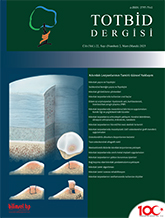
Menisci are fibrocartilaginous structures that increase joint compatibility between tibiofemoral compartments and contribute to stability secondarily. Meniscus loss or degeneration can cause pain, loss of function, and cartilage damage. Knee cartilage injuries are among the most difficult problems for both patients and physicians. The treatment of cartilage lesion becomes more complicated especially in patients who have undergone partial or subtotal/total meniscectomy. The treatment method varies according to the individual characteristics of the patient, the location, size and depth of the lesion. For successful treatment in patients with cartilage lesions, all concomitant pathologies including ligament instability, malalignment and meniscus pathologies should be discussed in detail and treatment should be planned. The first aim of treatment in cartilage lesions is to preserve the patient`s own cartilage, if possible. For small symptomatic lesions (<2 cm2), chondroplasty, microfracture or osteochondral autograft transfer is recommended in case of failure after conservative treatment. However, larger lesions require treatment with osteochondral allograft transplantation or matrix-derived autologous chondrocyte implantation (MACI)/ autologous chondrocyte implantation (ACI). In the presence of concomitant pathology, combined procedures such as corrective osteotomy or ligament reconstruction can be performed.